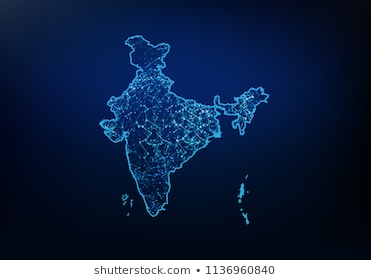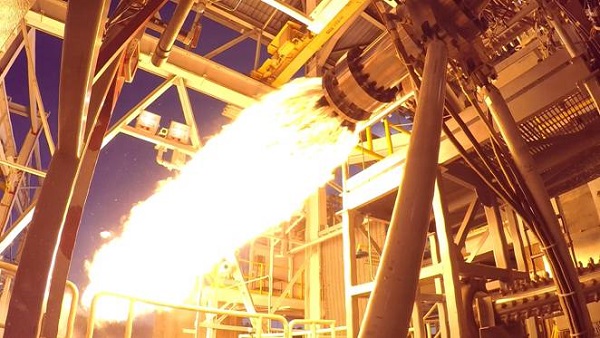“Towards meeting this responsibility and obligation, the realisation of any space asset by an Indian entity, operating in Low Earth Orbit (LEO), Medium Earth Orbit (MEO), Geostationary Orbit (GEO) or in any other orbit and use of space-based remote sensing in any part of the electromagnetic spectrum, to or from Indian territory, will be permitted through a process of authorization.”
Legal framework on Remote Sensing in Indian Space: Enough!
 |
| Indian map picture from a satellite Credit: Shutterstock |
Any private space startups active in the remote sensing field have to look for the “norms, guidelines and procedures” document for their activities. ISRO amalgamating with the Department of Space and Indian Government has come up with drafts of various space policies intending to make India self-reliant. Space Remote Sensing Policy - 2020 has been drafted to provide a legislative structure to accelerate the privatisation of the space sector. The draft preserves the national security of the nation through protecting sensitive data and information.
(Also read - ISRO Spacecom Policy explanation)
 |
| Earth image from space Credit: Shutterstock |
The backdrop of remote sensing in India
The role of remote sensing found its importance in the year of 1970 for the detection of the “coconut root-wilt disease” in India. Gradually, it’s importance expanded because of its multispectral camera system for various applications in society as India’s Foreign Policy has a societal-development perspective. Based on this observation, India launched its first Indian Remote Sensing Satellite in 1988 for the development of ocean, disaster management, atmosphere, land, water, etc. by acquiring data regarding the issues in these domains. It has focused on sensor technology and data processing techniques. National Natural Resources Management System(NNRMS), an institution which ensured the usage of data by various Central and State Government ministries, Non-governmental organisations and private sectors which was acquired through remote sensing. From the year 1988, a huge change has been experienced in this field. The data has opened for better accessibility and performance from Earth observation satellites results in the development of the space field and innovative applications, economic development and enhancing private participation.
India from space Credit: Shutterstock
Some important points on the Space Remote Sensing Policy - 2020
· To narrow down the gap between the demand and supply of data and technologies by building the base of remote sensing technology in Indian industries.
· End-to-end services will be provided to fully operate the space assets, establishing ground stations, accumulating satellite data and establishing the remote sensing facilities in the Indian territory and abroad.
· A simple registration or authorisation allows any service provider from India to provide data and services regarding the remote sensing to any country or company abroad excluding the “sensitive data”.
· Right to impose or control will be regulated on imaging and observation aspects for national security.
· All the services will be treated as commodities but will also be provided for social-development purposes.
· For sustainability, new innovative technologies and applications will develop through the Indian government.
· Private sector can fully operate the remote sensing systems
· Private sectors can perform operations like telemetry, tracking and command(TT&C).
· Private sectors were allowed to establish “Satellite Data Reception Stations” anywhere in India and outside the Indian territory.
· NGPEs can take the initiative in designing, development of satellites and remote sensing systems.
· Private sectors must provide the details of the payload, spacecraft, spectral bands, orbital parameters, coverage area, etc. to the government for national security while authorising.
· NGPEs are liable for any kind of damage done to space objects.
· Financial guarantee or insurance cover is a part of the authorization.
· The change of ownership may lead to a new process of authorization for the private sectors.
· The prescribed formats have been provided for the submission of proposals and registration of space assets.
· Specific authorisation is required for acquiring high-resolution data of less than fifty centimetres and it is treated as “sensitive”.
Remote sensing for society
For societal development purposes, remote sensing is an essential tool for “national development”, “strategic applications”, “technology demonstrations”, “disaster management support”, “weather monitoring” and “improved observing and imaging capability”. Ground Sample Distance(GSD) of 5 meters of data through remote sensing will be openly accessible as free. Through designated PSU or CPSE Remote Sensing satellite, data will be available for commercial purpose. “As is where is” is a category which is imposed as a condition for using data for research, making development and to add any value to the nation. Many facilities will be provided to the commercial sectors at no or notional cost.
(For more details - refer ISRO Remote Sensing Policy)






0 Comments